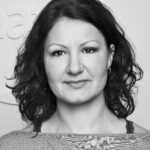Monitoring of the marine biosphere around Iceland 2009 and 2010 / Pollution monitoring in the marine environment around Iceland 2009 and 2010
This report presents the results of an annual monitoring project funded by the Ministry of the Environment and the Ministry of Fisheries and Agriculture. The purpose of this monitoring is to fulfill Iceland's obligations regarding the Oslo and Paris Agreement (OSPAR), as well as the AMAP (Arctic Monitoring Assessment Program). The data have been sent to the International Council for the Exploration of the Sea (ICES) database. The Marine Research Institute collects samples and Matís oversees the preparation of samples and measurements of trace elements in the marine environment. The samples are measured at Matís and at the University of Iceland Laboratory of Pharmacology and Toxicology. Various inorganic trace elements and chloro-organic substances were measured in cod caught in Hafró's annual spring rally in March 2010 and in mussels collected at 10 locations around the country in August / September 2009. Monitoring in the marine environment near Iceland began in 1989 and samples are collected once a year. for a year and worked according to international sampling instructions. The data is collected in a database, the report provides overview images for some of the materials monitored. Cadmium is regionally higher in Icelandic mussels compared to mussels from other countries. The results show changes in the pattern of chlorine organic matter in mussels collected near Hvalstöðin in Hvalfjörður in September 2009, there were no visible changes in the concentration of these substances at the mussel collection site at Hvammsvík in Hvalfjörður or at any other collection site around the country studied in 2009. Important is monitoring these changes in the pattern of concentration of chlorinated organic substances in mussels in the monitoring project in the coming years to see if they are still present. A detailed statistical analysis of the data is in progress, i.e. Scientific methods can be used to estimate the increase or decrease of pollutants in the marine environment in Iceland.
This report contains results of the annual monitoring of the biosphere around Iceland in 2009 and 2010. The project, overseen by the Environmental and Food Agency of Iceland, is to fulfill the OSPAR (Oslo and Paris agreement) and AMAP (Arctic Monitoring Assessment Program) agreements. The project was funded by the Ministry of the Environment and the Ministry of Fisheries and Agriculture. The data has been submitted to the ICES databank (ices.dk). The collection of data started 1989. Matís is the coordinator for marine biota monitoring and is responsible for methods relating to sampling, preparation and analysis of samples. The samples were analyzed at Matís and the Department of Pharmacology and Toxicology at the University of Iceland. Trace metals and organochlorines were analyzed in cod (Gadus morhua) caught in March 2010 and in blue mussel (Mytilus edulis) collected in August / Sept 2009. Marine monitoring began in Iceland 1989 and the sampling is carried out according to standardized sampling guidelines. Changes were observed in the organochlorine concentration patterns in blue mussels collected year 2009 at the sampling site Hvalstod in Hvalfjordur, no noteworthy increase in organochlorine concentrations was however observed in blue mussels obtained at Hvammsvík in Hvalfjordur nor any of the other sample sites studied year 2009. These results need to be followed up in the annual monitoring of the biosphere around Iceland next year to see if this change in contaminant concentration pattern continues. A thorough statistical evaluation is ongoing on all available data from this monitoring program to analyze spatial and temporal trends of pollutants in the Icelandic marine biosphere.

